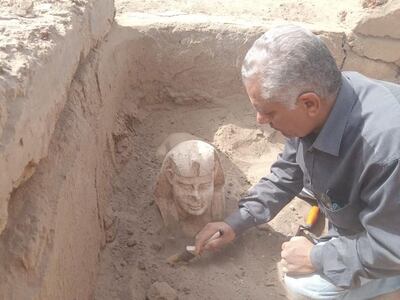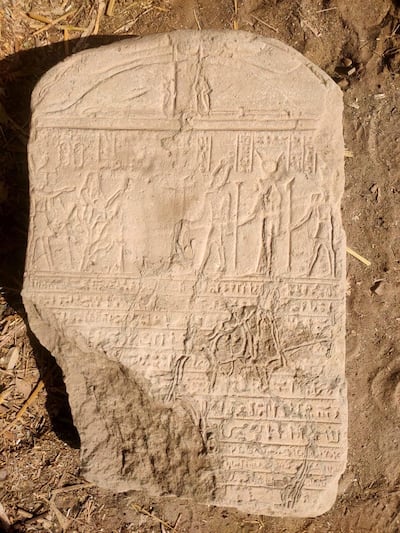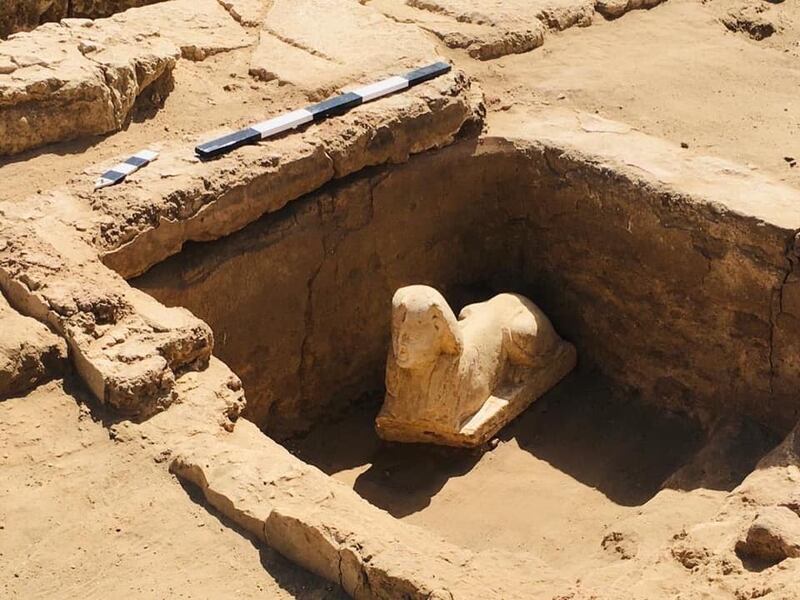An Egyptian archaeological mission has discovered a sphinx statue inside a Roman-era limestone cabin that was excavated in the south of the country.
Led by Dr Mamdouh El Damaty, a former antiquities minister and a professor of archaeology at Cairo’s Ain Shams University, the mission was working east of Dendera Temple in the southern province of Qena.
Found within the two-storey cabin was a large water basin made of red brick and coated with mortar.
After preliminary dating, the mission determined it was from the Byzantine period.
The sphinx statue was found inside the basin.
Draping the sphinx’s head in stone is the ancient Egyptian Nemes, a headdress made of striped cloth and worn by pharaohs underneath their crowns in ancient Egypt.

A flared cobra is sculpted above the sphinx’s brow, as was the custom when for royal statues.
“Preliminary inspection of the sphinx’s face suggests that the sphinx is a depiction of the Roman emperor Claudius,” the ministry’s statement read.
Claudius ruled Egypt, which at the time was under Roman rule, as part of his empire from 10 BCE-54 CE.
“The statue is really beautiful, its face is characterised by royal features that are depicted quite precisely,” Dr El Damaty said. “The traces of a smile can be seen on the edges of its mouth, which has a dimple on either side. There are traces of yellow and red in the face.”
Also unearthed alongside the sphinx was a tablet dating back to Roman rule of Egypt. It is inscribed with hieroglyphs and demotic, an ancient Egyptian script.

The university mission intends to continue its work in Dendera, where there is a small temple dedicated to Isis and believed to have been built by Roman emperor Nero, who preceded Claudius.
Archaeologists suspect that an underground path links the Isis temple to another temple on the eastern side of the complex, dedicated to the ancient Egyptian god Horus.







